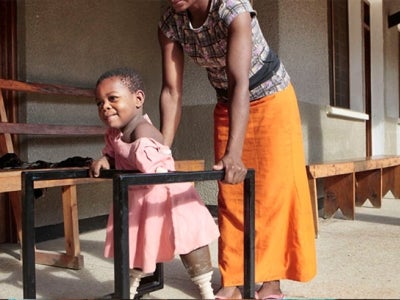
Photo by Pedro Szekely via Flickr CC
Why is it that in a country like Colombia, the first project developed and implemented with GEF funding at the beginning of the 1990s had to do with the Conservation of Biodiversity in the Biogeographical Region of Choco, yet today, 25 years later we are preparing a project entitled Biodiversity and Sustainable Development in the Pacific Region in the context of Peacebuilding?
The answer to this question will include information on a number of changes and undeniable complexities. Since the mid-1990s, Colombia has received support from the Global Environment Facility (GEF) for some fifty projects, that have helped to give expression to the principles defined in the decade of the 1970s and subsequently set forth in the new Political Constitution of 1991, which devotes 25 percent of its provisions to environment-related issues. Building on this foundation, 1993 saw the creation of the legal framework for the management and conservation of renewable natural resources and the environment, while the Sistema Nacional Ambiental -SINA (National Environment System) was formed as a platform for State, mixed and private institutions, academia, civil society and community bodies to monitor the protection of the environment and ensure sustainable development.
In this regard, SINA stakeholders have been involved at the national level in the various projects of the Focal Areas on Biodiversity, Climate Change, Degraded Lands, Chemicals and Waste, Persistent Organic Pollutants, among others. They have strengthened their capacity for developing policies and legislation in line with the global targets enshrined in international instruments, proposing innovative solutions for environmental problems and establishing links between very diverse cultural and ethnic communities. In this way, they have contributed to the well-being and the preservation of the livelihoods of the custodians of the country’s natural and cultural wealth. It has also enabled other sectors to participate in the development and implementation of innovative forms of sustainable development and has involved the private sector in this important undertaking.
With the first projects, we learned how to integrate themes such as land-use management, strategic eco-systems (páramos, or barren plains, wetlands, forests, and marine areas), sustainable conservation systems, protected areas, and information systems for adequate planning, among others.
In this regard, the last three GEF replenishments have made it possible for us to compile and harness successful experiences to be used in projects that contribute to the goal of recent Governments of Colombia – that of building peace. This experience, together with the outcome of the talks in Havana with the FARC (the guerrilla operating in Colombia for the past 52 years), have led us to revisit the lessons learned from these projects. Specifically, some fundamental aspects of rural development pertain to the democratization of access to land and land use, which in turn include elements that have been traditionally addressed in the various projects. These include: the generation of information on the state, use and distribution of land in Colombia and its importance as a tool for determining environmental land-use management and consequently, the delimitation of the agricultural frontier. The importance of land in the protection of areas of environmental interest that host the cultural and biological diversity of the country is another aspect that has been addressed. These projects have made another invaluable contribution by facilitating the involvement of diverse communities, indigenous peoples, small farmers, Afro-Colombians and other ethnic groups as stakeholders that have been active in defining, developing, implementing and monitoring the activities to be carried out in their respective regions.
This is critical, particularly in a country that over the last 52 years has had to contend with the issue of territories that are environmentally strategic because of the diversity that they contain and the eco-systemic services they provide, yet have been spaces to which the State and its institutions have had only limited access. For this reason, the opportunity to work with community organizations and civil society, as well as with implementing agencies, has made it possible to gain access to these territories and to render concrete support to environmental conservation and sustainable development.
While Colombia is among the countries that have recently rolled out the Small Grants Program, implementation by the most vulnerable grassroots communities is already up and running (their vulnerability stems from the political, social and environmental conflict). As the process of peace building gets underway, these communities will require unstinting support at the national and international levels to consolidate their rights and come to terms with their surroundings. In so doing, the way in which they relate to biodiversity can become a factor that reaffirms their identity and boosts their chances of realizing licit and sustainable development and growth.
In this context, in order to re-conceptualize the different regions of the country, such as the Pacific region, it will be necessary to bear in mind not only the immense biological and cultural diversity but also the current situation of public and private communities and institutions in the reconfigured framework, particularly those located in rural areas that face the challenges inherent to the search for peace.
Once agreement is reached on a formula for negotiations, it is estimated that this transition could last for more than a decade, and could take a further 25 years to become consolidated. For this reason, an approach centered on environmental protection and peace will be Colombia’s priority for the seventh GEF replenishment. This will facilitate the development and strengthening of successful experiences and allow Colombia to share its successes and failures with other countries, and, in so doing, contribute to the consolidation of the Sustainable Development Goals, global commitments and world peace.
October 2016


